Sugar Balance: Circulatory and Retinal Support
About diabetic retinopathy
Diet & nutrition
Lifestyle
Reviews
Damage occurs to the retina when blood vessels in the eye become enlarged and leak putting pressure on other parts of the retina. In some cases new capillaries grow abnormally crowding the retina structure and distorting and damaging vision.
Vitamins
& Supplements
Not sure which to get?For help call us at 845.475.4158
Complete Product List
Discount Packages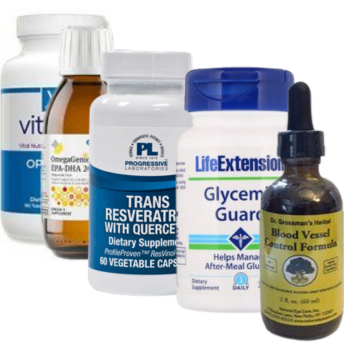 Sugar Balance & Blood Vessel Support Package 1 (1 month) Sugar Balance & Blood Vessel Support Package 1 (1 month)Helps balance sugar, increase insulin sensitivity, support pancreas, strengthen blood vessels & reduce inflammation. |
Essential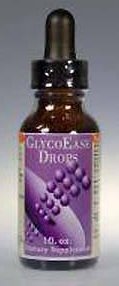 GlycoEase Sublingual Formula GlycoEase Sublingual FormulaSupports insulin sensitivity, the pancreas, and helps balance sugar. |
Essential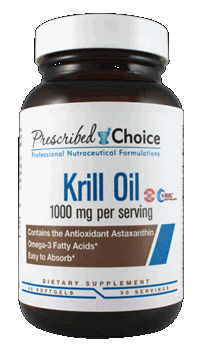 Krill Oil, 1000mg 60 softgels Krill Oil, 1000mg 60 softgelsHigh quality omega-3 fatty acid formula with astaxanthin. |
Essential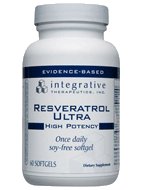 Resveratrol Ultra High Potency 60 gels - Antioxidant Resveratrol Ultra High Potency 60 gels - AntioxidantSupports blood vessel strength, fights free radicals. |
Essential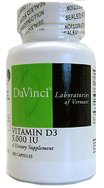 Vitamin D3 5000 IU 120 vcaps Vitamin D3 5000 IU 120 vcapsVitamin D3 5000 IU per capsule |
Essential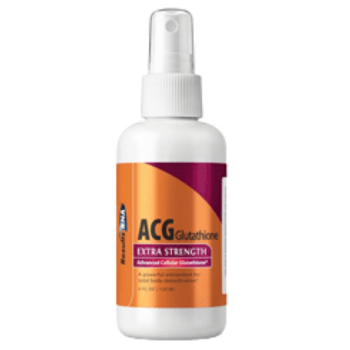 ACG Glutathione EXTRA STRENGTH Spray 2oz. ACG Glutathione EXTRA STRENGTH Spray 2oz. Glutathione Spray antioxidant for eye and overall health. Vegan and GMO Free. |
Essential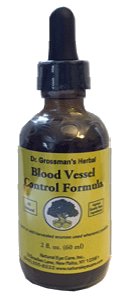 Dr. Grossman’s Blood Vessel Control Formula 2oz Dr. Grossman’s Blood Vessel Control Formula 2ozSupports blood vessel balance. |
Essential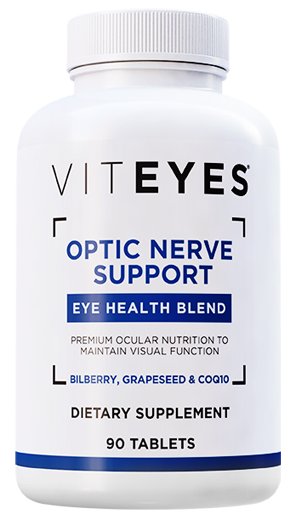 Viteyes Optic Nerve Support Formula - 90 tablets Viteyes Optic Nerve Support Formula - 90 tabletsSupports healthy optic nerve function |
| Important Microcurrent Stimulation 100ile Purchase Option Viteyes Complete - 180 caps |
The National Institutes of Health attributes blood sugar imbalances as contributing factors not only to diabetic retinopathy, but to cataracts and glaucoma.
Complementary Treatment
Since we consider most eye conditions to be a reflection of the health of the whole body, lifestyle choices and diet can play a major factor in cultivating and maintaining good vision. Below are some recommendations:
Vision loss resulting from blood sugar imbalance may be largely preventable with diligent care by you and from your physician. Certain nutrients such as vandyl sulfate, gymnema sylvestra, chromium, zeaxanthin, lutein, alpha lipoic acid, vitamin C and other vitamins, enzymes and omega-3 fatty acids may be helpful.
Diet & Nutrition
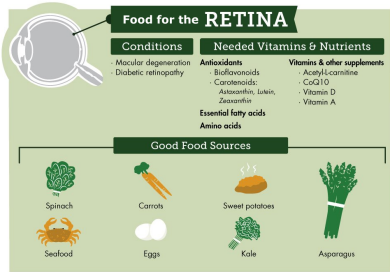
- Juice fresh, organic drinks daily. We recommend ginger, garlic, asparagus, leeks, jerusalem artichokes, parsley, spinach, beets, celery, pumpkin, carrots, cabbage, raspberries, chlorophyll, (not too much fruit). Learn more about why juicing is important and effective.
- Drink plenty of purified water daily.
- Eat cold water fish (including salmon, mackerel, sardines) 2-3 times a week.
- Include more fiber in your diet, and nibble rather than gobble.
- Take digestive aids (in a natural form) if needed to improve digestion.
- Certain nutrients including antioxidants, amino acids, vitamins, enzymes, and fish
oil may help those with diabetic retinopathy and may help to preserve vision.
- Researchers report that patients with diabetic eye disease have lower levels of folic acid and red cell folate levels, and that the greater the deficiency the greater the severity.1
- Researchers find that curcumin, found in turmeric, is a neuroprotective role in treating diabetes.2, 4
- Vitamin D deficiency is associated with risk and severity of diabetic eye disease.3
- Alpha-lipoic acid is an antioxidant compound improves insulin sensitivity in individuals with type 2 diabetes.6,7,8
- Astaxanthin has protective actions of microalgae against endogenous and exogenous advanced glycation end products (AGEs) in human retinal pigment epithelial cells.9,10
- Bilberry may lessen neovascularization in the retina, which complicates retinopathy. Bilberry is also used to improve night vision and to decrease vascular permeability and capillary fragility; most interest has been focused on its anthocyanin-related antioxidant effects.11,12
- CoQ10 has strong antioxidant properties and protects proteins and mitochondrial DNA from oxidative damage. CoQ10 levels in your body deplete over time.13
- DHA, a component of omega-3s, reduces inflammation such as the inflammation in the retina seen in diabetic retinopathy. DHA is also a precursor for a biochemical compound known as neuroprotectin D1, which also helps protect against damage from inflammation and reduces cell death within the retina.14,15
- Glutathione is one of the super antioxidants that neutralizes the full range of free radicals. Patients with uncontrolled type 2 diabetes are unable to adequately synthesize glutathione because of a lack of natural precursors in the body.16,17
- Grape seed extract stimulates the body's Nrf2 pathway (activating the antioxidant defenses of the body)25 and upregulates thioredoxin (a protein that acts as an antioxidant and is important for cell-to-cell communication).26
- Lutein/zeaxanthin/lycopene all address inflammation, a problem in diabetic eye disease. Such patients tend to have low levels of these carotenoids compared to diabetics who do not have eye disease.18, 19
- Taurine has been reported to protect visual function during diabetes and to help prevent damage due to oxidative stress and inflammation.20,21
- Trans-resveratrol helps protect nerve cells from damage, promotes healthy insulin sensitivity, encourages enhanced mitochondrial function, promotes a healthy inflammatory response, and protects against the effects of a high-fat diet.22,23,24
- Omega-7 is helpful against the metabolic disorders that underlie diabetes, by supplementing benefits of omega-3s with respect to the cardiovascular system and blood lipid levels. It can help break the cycle of high blood sugar, elevated lipid levels, inflammation, and excess fat gain30 as well as enhance insulin sensitivity.31, 32, 33 Omega-7 has been shown to cause an increase in fat breakdown and an increase in the enzymes involved in fat burning for energy.34
Lifestyle
- Avoid cortisone. This drug raises blood sugar.
- Limit medications you don't really need, working closely with your doctor.
- Exercise is very important for you. A brisk daily or 4-5 days a week walk can be helpful in maintaining overall health. Research demonstrates that those who do not get much exercise have a more difficult time managing their sugar balance.
- Manage weight by maintaining a healthy balanced diet. See dietary recommendations for detailed information.
- Yoga. Research suggests that 12 minutes of yoga6 every day brings about a measurable reductions in inflammation - an issue in diabetic retinopathy.
- Be sure to work closely with your doctor. Don't change insulin or diabetes-related medications without consulting your doctor.
- European researchers have found that optogenetics, in which light-sensing proteins are introduced into the eye, may be helpful in treating retinal degenerative conditions like diabetic retinopathy.
Conventional Treatment
There are two surgical treatments for diabetic retinopathy:
Laser Surgery. Argon-laser photocoagulation is a type of laser surgery used to treat macular edema and proliferative retinopathy (advanced diabetic retinopathy). Generally, laser surgery is used to stabilize vision, not necessarily to improve it.27 Laser surgery includes focal and scatter laser treatment. Focal laser treatment seals leaking vessels.28 Scatter laser treatment (used for proliferative retinopathy) shrinks the abnormal blood vessels. Both of these treatments can often result in loss of peripheral vision.
Vitrectomy is the surgical removal of the vitreous gel in the center of the eye. In some people with proliferative diabetic retinopathy, bleeding into the vitreous (vitreous hemorrhage) makes laser photocoagulation treatment impossible because the blood obscures the surgeon's view of the retina. Vitrectomy, which is performed under local or general anesthesia, typically on an outpatient basis, removes the cloudy vitreous and replaces it with a salt solution, or air (which is a mixture of gases—mainly nitrogen and oxygen), but also small amounts of carbon dioxide and substantially lower amounts of many other inert gases such as argon, neon, and helium. Eye drops are used for a few weeks after the surgery. This solution has a low surface tension and therefore does not have a negative effect on the retina.
The surgery typically includes steroid drops to minimize inflammation, antibiotic drops to prevent infection, and dilating drops to provide comfort and minimize scarring of the pupil. The gases from air are reabsorbed by the body in a week to two months and are replaced by natural vitreous fluid that the eye is constantly producing. Silicone oil is also sometimes used and may result in a quicker visual recovery after surgery, no restriction on air travel, no special head positioning after surgery, and longer duration of effect. But it needs to be removed later in a procedure similar to vitreous humor removal.
Side effects of vitrectomy
- Short-term sensitivity to glare and/or double vision.
- 5-10% risk of needing further retinal surgery
- 30-43% likelihood of developing a cataract
- Elevated pressure inside the eye especially in people who have glaucoma
- Further bleeding into the vitreous gel
- Retinal detachment
- Fluid buildup in the clear covering of the eye (corneal edema)
- Infection inside the eye (endophthalmitis)
Anti-VEGF (vascular endothelial growth factor) injections include drugs such as Lucentis, Avestin, Regeneron, and/or Eylea. They are administered via injection for retinal bleeding or edema, and help to shrink new blood vessels. Treatment using these injections can last up to five years, with a gradual decrease of injections over time. Recovery time depends on the extent of the diabetic retinopathy. Depending on the extent of the blood leakage, it may take weeks or up to months for the blurriness to improve; full vision does not always return. As a side note, dilated eye exams may be needed less often as the disease stabilizes. However, it is important to note, that if the underlying mechanism is not addressed, these treatments are a temporary solution. The signals (VEGF) in the body to create new blood vessels are still present, so eventually more new blood vessels will develop.
Intravitreal corticosteroids have been successfully used in the eyes of patients with persistent diabetic macular edema (DME), similar to diabetic retinopathy.29 The epidemiology of DME is not well studied and the diagnosis is challenging since proper diagnosis and classification is not possible with non-stereoscopic retinal photos.
Footnotes
1. G. Malaguarnera, et al, Folate status in type 2 diabetic patients with and without retinopathy, Clinical Ophthalmology, August, 2015.
2. B. Meng, et al, Effects of Curcumin on TTX-R Sodium Currents of Dorsal Root Ganglion Neurons in Type 2 Diabetic Rats with Diabetic Neuropathic Pain, Neuroscience Letters, August, 2015.
3. N. Alcubierre, et al, Vitamin D Deficiency Is Associated with the Presence and Severity of Diabetic Retinopathy in Type 2 Diabetes Mellitus, Journal of Diabetes Research, May, 2015.
4. M.K. Jeenger, et al, Curcumin: a pleiotropic phytonutrient in diabetic complications, Nutrition, February, 2015
5. www.naturaleyecare.com/study.asp?s_num=337
6. Lin, J., Bierhaus, A., Bugert, P., Dietrich, N., Feng, Y., et al. (2006). Effect of R-(+)-alpha-lipoic acid on experimental diabetic retinopathy. Diabetologia, May;49(5):1089-96.
7.Hultberg, M. Hultberg, B. (2006). The effect of different antioxidants on glutathione turnover in human cell lines and their interaction with hydrogen peroxide. Chem Biol Interact, Nov 7;163(3).
8. Nebbioso, M., Pranno, F., Pescosolido, N. (2013). Lipoic acid in animal models and clinical use in diabetic retinopathy. Expert Opin Pharmacother, Sep;14(13):1829-38.
9.Nakano, M., Orimo, N., Katagirim N., Tsubata, M., Takahashi, J., et al. Inhibitory effect of astaxanthin combined with Flavangenol on oxidative stress biomarkers in streptozotocin-induced diabetic rats. Int J Vitam Nutr Res, 2008 Jul-Sep;78(4-5):175-82.
10. Murillo, A.G., Fernandez, M.L. (2016). Potential of Dietary Non-Provitamin A Carotenoids in the Prevention and Treatment of Diabetic Microvascular Complications. Adv Nutr, Jan 15;7(1):14-24.
11.Kim, J., Kim, C.S., Lee, Y.M., Sohn, E., Jo, K., et al. (2015). Vaccinium myrtillus extract prevents or delays the onset of diabetes--induced blood-retinal barrier breakdown. Int J Food Sci Nutr, Mar;66(2):236-42.
12. Domanico, D., Fragiotta, S., Cutini, A., Carnevale, C., Zompatori, L., et al. Circulating levels of reactive oxygen species in patients with nonproliferative diabetic retinopathy and the influence of antioxidant supplementation: 6-month follow-up. Indian J Ophthalmol, Jan;63(1):9-14.
13. Littarru, G.P., Tiano, L. (2007). Bioenergetic and antioxidant properties of coenzyme Q10: recent developments. Mol Biotechnol, Sep;37(1):31-7.
14.Bazan, N.G., Molina, M.F., Gordon, W.C. (2011). Docosahexaenoic acid signalolipidomics in nutrition: significance in aging, neuroinflammation, macular degeneration, Alzheimer's, and other neurodegenerative diseases. Annu Rev Nutr, Aug 21;31:321-51.
15. Mukherjee, P.K., Marcheselli, V.L., Serhan, C.N., Bazan, N.G. (2004). Neuroprotectin D1: a docosahexaenoic acid-derived docosatriene protects human retinal pigment epithelial cells from oxidative stress. Proc Natl Acad Sci USA, Jun 1;101(22):8491-6
16. Santiago, A.R., Boia, R., Aires, I.D., Ambrosio, A.F. and Fernandes, R. (2018). Sweet Stress: Coping with Vascular Dysfunction in Diabetic Retinopathy. Front Physiol, 2018;9:820.
17.Sekhar, R.V., McKay, S.V., Patel, S.G., Guthikonda, A.P. Reddy, V.T., et al. (2011). Glutathione Synthesis Is Diminished in Patients With Uncontrolled Diabetes and Restored by Dietary Supplementation With Cysteine and Glycine. Diabetes Care, Jan; 34(1):162–167.
18. Neelam, K., Goenadi, C.J., Lun, K., Yip, C.C., Au Eong, K.G. (2017). Putative protective role of lutein and zeaxanthin in diabetic retinopathy. Br J Ophthalmol, May;101(5):551-558.
19. Li, Z.Z., Lu, X.Z., Ma, C.C., Chen, L. (2010). Serum lycopene levels in patients with diabetic retinopathy. Eur J Ophthalmol, Jul-Aug;20(4):719-23.
20.Yu, X., Xu, Z., Mi, M., Xu, H., Zhu, J., et al. (2008). Dietary taurine supplementation ameliorates diabetic retinopathy via anti-excitotoxicity of glutamate in streptozotocin-induced Sprague-Dawley rats. Neurochem Res, Mar;33(3):500-7.
21. Sarkar, P., Basak, P., Ghosh, S., Kundu, M., Sil, P.C. (2017). Prophylactic role of taurine and its derivatives against diabetes mellitus and its related complications. Food Chem Toxicol, Dec;110:109-121.
22. Timmers, S., Konings, E., Bilet, L., Houtkooper, R.H., van de Weijer, T., et al. (2011). Calorie restriction-like effects of 30 days of resveratrol supplementation on energy metabolism and metabolic profile in obese humans. Cell Metab, Nov 2;14(5):612-22.
23. Crandall, J.P., Oram, V., Trandadirescu, G., Reid, M. Kishore, P., et al. (2012). Pilot study of resveratrol in older adults with impaired glucose tolerance. J Gerontol A Biol Sci Med Sci, Dec;67(12):1307-12.
24. Anderson, G., Burkon, A., Sulzmaier, F.J., Walker, J.M., Leckband, G. (2011). High dose of dietary resveratrol enhances insulin sensitivity in healthy rats but does not lead to metabolite concentrations effective for SIRT1 expression. Mol Nutr Food Res, Aug;55(8):1197-206.
25. Sun, Y., Xiu, C., Liu, W., tao, Y., Wang, J., Qu, Y.I. (2016). Grape seed proanthocyanidin extract protects the retina against early diabetic injury by activating the Nrf2 pathway. Exp Ther Med, Apr;11(4):1253-1258.
26. Ren, X., Lu, H., Wang, N., Zhang, C., Ji, Y., et al. (2017). Thioredoxin is implicated in the anti apoptotic effects of grapeseed proanthocyanidin extract during hyperglycemia. Mol Med Rep, Nov;16(5):7731-7737.
27. Takamura, Y., Arimura, S., Miyake, S., Matsumura, T., Gozawa, M., et al. (2017). Panretinal Photocoagulation Using Short-Pulse Laser Induces Less Inflammation and Macular Thickening in Patients with Diabetic Retinopathy. J Ophthalmol, 2017:8530261
28. Crosson, J.N., Mason, L., Mason, J.O., (2017). The Role of Focal laser in the Anti-Vascular Endothelial Growth Factor Era. Ophthalmol Eye Dis, Nov 21;9:1179172117738240
29.Sarao, V., Veritti, D., Boscia, F., Lanzetta, P. (2014). Intravitreal Steroids for the Treatment of Retinal Diseases. Sci World J, 2014:989501.
30. Bolsoni-Lopes A, Festuccia WT, Chimin P, Farias TS, Torres-Leal FL. (2014). Palmitoleic acid (n-7) increases white adipocytes GLUT4 content and glucose uptake in association with AMPK activation. Lipids Health Dis. 2014;13:199.
31. Bernstein AM, Roizen MF, Martinez L. (2014). Purified palmitoleic acid for the reduction of high-sensitivity C-reactive protein and serum lipids: a double-blinded, randomized, placebo controlled study. J Clin Lipidol. 2014;8(6):612-7.
32. Yang ZH, Miyahara H, Hatanaka A. (2011). Chronic administration of palmitoleic acid reduces insulin resistance and hepatic lipid accumulation in KK-Ay Mice with genetic type 2 diabetes. Lipids Health Dis. 2011;10:120.
33. Stefan N, Kantartzis K, Celebi N, Staiger H, Machann J, et al. (2010). Circulating palmitoleate strongly and independently predicts insulin sensitivity in humans. Diabetes Care. 2010;33(2):405-7.
34.Bolsoni-Lopes A, Festuccia WT, Farias TS, Chimin P, Torres-Leal FL, et al. (2013). Palmitoleic acid (n-7) increases white adipocyte lipolysis and lipase content in a PPARalpha-dependent manner. Am J Physiol Endocrinol Metab. 2013;305(9):E1093-102.
About diabetic retinopathy
Diet & nutrition
Lifestyle
Reviews
 info@naturaleyecare.com
info@naturaleyecare.com



 Home
Home



 Vision
Vision Vision
Vision



 Health
Health Health
Health Research/Services
Research/Services Pets
Pets About/Contact
About/Contact


